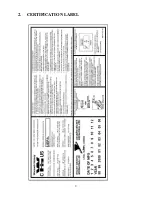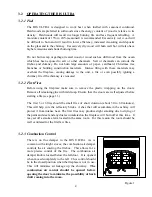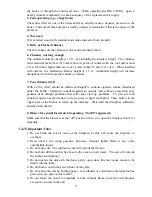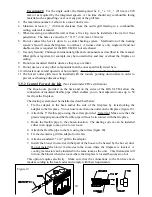
9
3.3
MAINTAINING YOUR BIS ULTRA
3.3.1 Creosote
When wood is burned slowly, it produces tar and other organic vapours which combine
with expelled moisture to form a black deposit called creosote that accumulates on the
flue lining. When ignited, this creosote makes an extremely hot fire. If the creosote
accumulation is large, a creosote fire in the chimney can damage the chimney and overheat
the surrounding wood framing. Creosote formation in a chimney can be minimised by
making small hot fires rather than slow burning, smouldering fires and by proper refuelling
techniques.
3.3.2 Chimney Maintenance
Regular chimney inspection and maintenance combined with proper operation will
prevent chimney fires. Keep your chimney clean. Do not allow more than 1/16" creosote
build up in your chimney. The amount of creosote will depend on variables such as
frequency of use and type of fire. We recommend that you:
1.
Initially inspect the chimney system weekly. From this, you will learn how often it
will be necessary to clean your chimney.
2.
Have your chimney cleaned by a qualified chimney sweep. If you wish to clean it
yourself, we recommend using a stiff plastic or non-metallic brush. If a metal brush is
used, its size should be slightly smaller than the flue to avoid damaging the chimney.
Do not use a brush that will scratch the stainless steel interior of the chimney.
3.
Do not expect chemical cleaners to keep your chimney clean. The rain cap can be
removed for inspection and/or cleaning of the chimney. Using gloves, firmly grip the
lower portion of the rain cap. Turn the cap 1/8 of a turn counter-clockwise and lift it
off the chimney.
3.3.3 Dealing With a Chimney Fire
Regular chimney maintenance and inspection can prevent chimney fires. If you have a
chimney fire, follow these steps:
1.
Close the fireplace doors and the combustion air damper.
2.
Alert your family of the possible danger.
3.
If you require assistance, alert your fire department.
4.
If possible, use a dry chemical fire extinguisher, baking soda or sand to control the fire.
Do not use water as it may cause a dangerous steam explosion.
5.
Check outside to ensure that sparks and hot embers coming out of the chimney are
not igniting the roof.
6.
Do not use the fireplace again until your chimney and fireplace have been inspected
by a qualified chimney sweep or a Fire Department Inspector.
Summary of Contents for EPA BIS ULTRA
Page 2: ...Printed in Canada Rev 9 April 2007 PIBISULTRAEPA ...
Page 7: ...2 2 CERTIFICATION LABEL ...
Page 10: ...5 ...
Page 20: ...15 Figure 7 Figure 9 Figure 8 Figure 10 ...
Page 30: ...25 Figure 28 NOTE THE OUTSIDE AIR KIT IS MANDATORY FOR BOTH FIREPLACE AND CHIMNEY ...
Page 35: ...30 Figure 31 Figure 32 ...
Page 37: ...32 ...















































